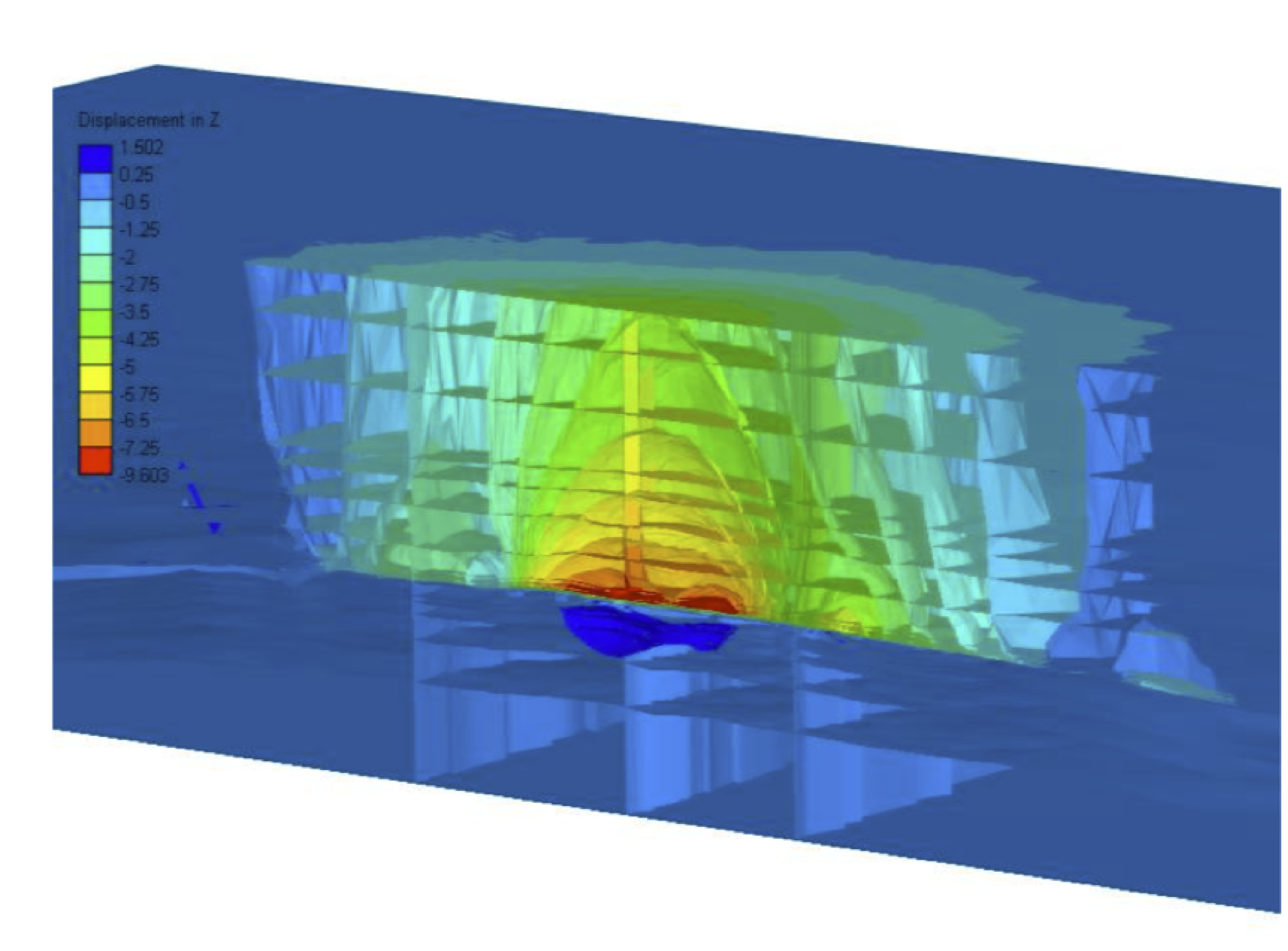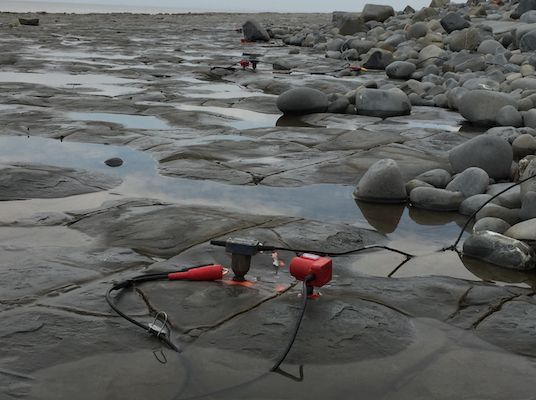James Verdon's Research
My research is spread across several key themes:
Microseismic monitoring
Deformation within subsurface reservoirs produces movement on fractures and small faults. These movements release seismic energy - in essence they are very small earthquakes (hence the term "microseismic"). Microseismic events are detected and located using arrays of geophones placed in boreholes in and around the reservoir. Current research includes work on: improved detection and location of events; on using events as seismic sources to image reservoir properties; and on interpreting events with respect to the geomechanical behaviour of the reservoir


Geomechanical Simulation
Changes in pore pressure, produced by either depletion or injection, will generate poro-elastic stress changes both within and in the rocks surrounding a reservoir. These stress changes result in geomechanical deformation. Geomechanical deformation can manifest itself in a number of ways, including: well-bore deformation; surface uplift or subsidence; induced seismicity; and the generation or reactivation of fracture networks. Current research includes work developing finite element models to simulate the impacts of geomechanical deformation on reservoirs.
Induced Seismicity
We have known for over 50 years that geomechanical deformation can reactivate tectonic faults, inducing "felt" (i.e. of sufficient magnitude to be felt by nearby populations) seismicity. In recent years the issue of induced seismicity has grown in prominence, associated with a range of activities including: mature, depleted reservoirs; waste-water disposal in deep aquifers; and hydraulic fracturing. Current research includes: developing statistical models to forecast induced seismicity at industrial sites; building geomechanical simulations of induced seismicity; and deploying seismic monitoring arrays at industrial sites.

Rock Physics
Changes in fluid saturation, applied stress field, pore fluid pressure and strain will all change the seismic properties of a body of rock. It is rock physics that provides the bridge that allows changes in seismic observables to be interpreted appropriately as being caused by changes of these variables. By building rock physics models, we can also make predictions about changes in seismic observables based on fluid flow and/or geomechanical models. Current research includes: using controlled source seismic methods to measure the impact of fractures on seismic properties; and modelling the changes in seismic velocities caused by fractures and by changes in stress and pore pressure.
Powered by w3.css